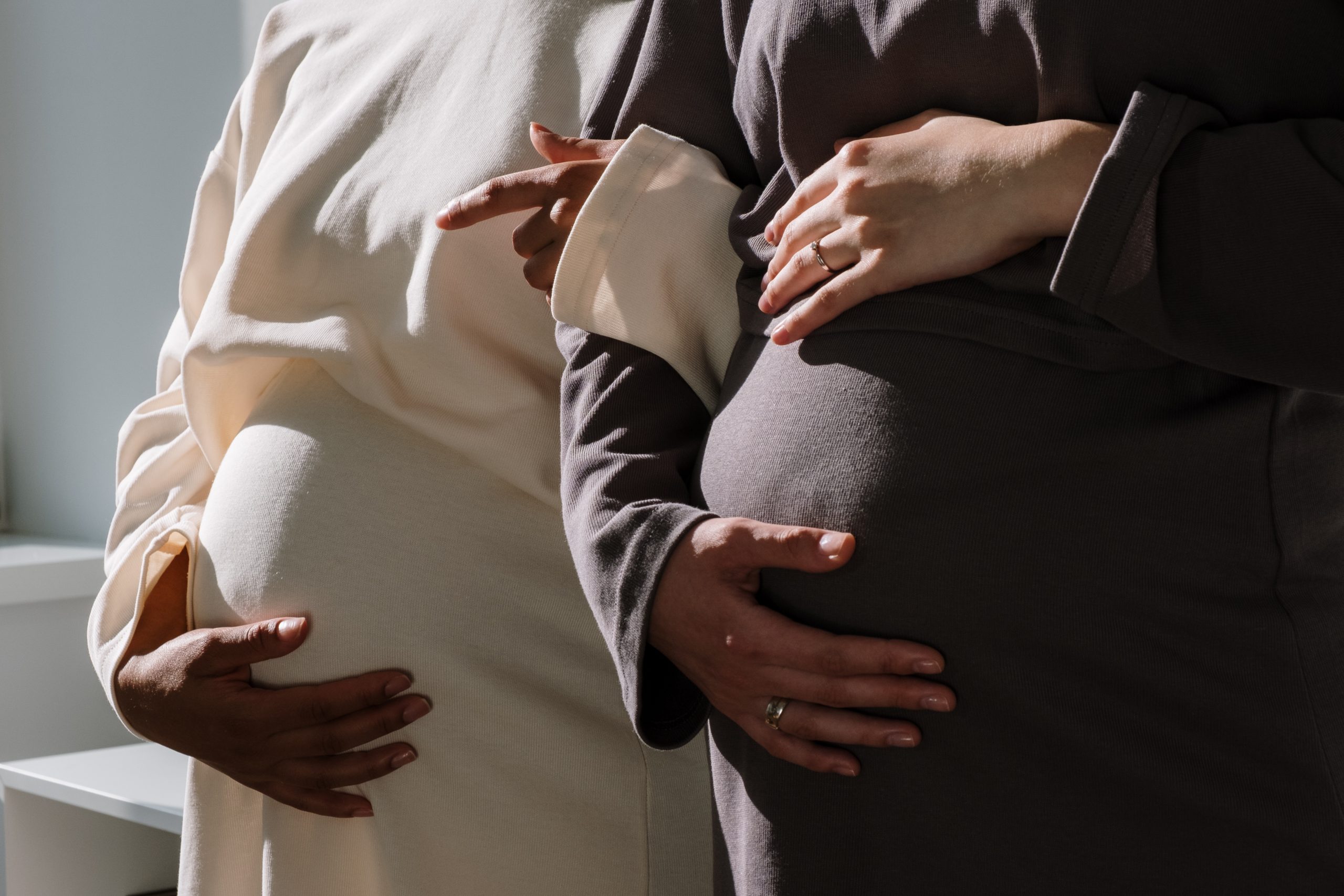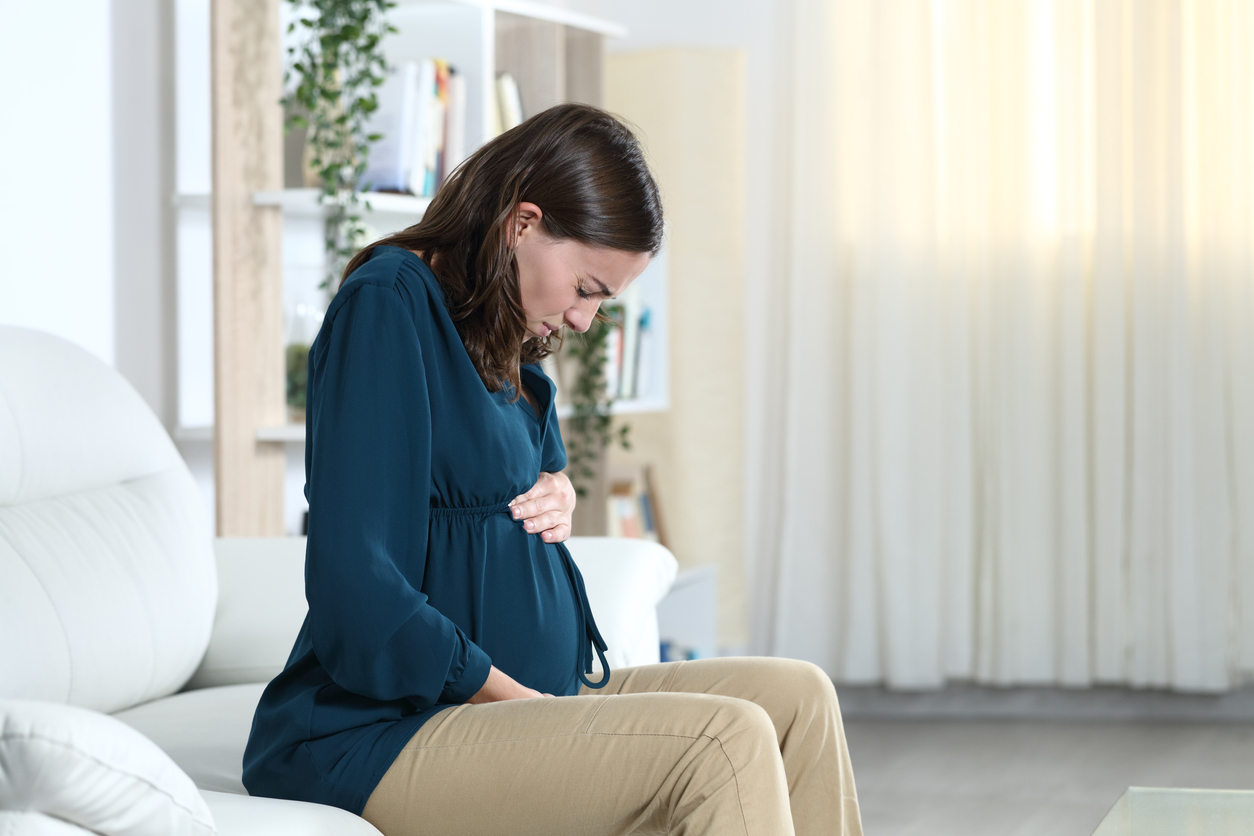As soon as many women get a positive pregnancy test, they have the same question: “how big will my tummy get?” In fact, by the end of a pregnancy, women gain as much as 35 pounds (16 kilograms).
If you’re months into your pregnancy and still without a bump, you’re not alone. Many first-time moms are surprised at how long it takes for them to develop a bump!
When Will I Start Showing?
For first-time moms, the baby bump usually starts to show around 12 to 16 weeks. But if you’ve been pregnant before, you may start showing sooner because your muscles and skin are already stretched from a previous pregnancy.
Of course, there is a lot of variation in when women start showing. It depends on your body type, how much weight you gain during pregnancy, and the position of your baby.
If you’re carrying twins or triplets, you may start showing sooner than if you’re carrying just one baby. And if you gain a lot of weight quickly in early pregnancy, you may also start showing sooner.
Factors that Impact Bump Size
If you want to know how big your tummy will get, there are a couple of things that can give you a rough estimate.
Pre-pregnancy Weight
The first is your pre-pregnancy weight. Heavier women tend to have larger babies and therefore show earlier and more noticeably than thin women. So, if you started out at the high end of a healthy weight range, you’re likely to have a bigger baby – and a bigger tummy.
Pelvis Size
The second is the size of your pelvis. This doesn’t necessarily mean that you have a small waistline, but rather the shape of your hips. If you have a wide pelvis, it leaves more room for the baby to grow without pushing out on your tummy from the inside. So even if you’re carrying twins, if you have a wide pelvis, you may not look much different from a woman carrying a single baby with a narrow pelvis.
Of course, every pregnancy is different, and there are always exceptions to the rule. So don’t worry if you don’t fit neatly into one of these categories – your doctor will be able to give you a more accurate estimate of how big your baby (and tummy) will be.
Number of Babies
The number of babies you’re carrying. Obviously, if you’re carrying twins or triplets, you’ll have a larger bump than if you’re carrying one baby.
Baby’s Position
If your baby is lying with their back down (anterior position), they take up less space, and you may not look as pregnant as you would if they were lying with their back up (posterior position).
Muscle Tone
If you have strong abdominal muscles, they may hold in your baby a bit more, making you look less pregnant than someone with weaker abdominal muscles.
Weight Gain
If you gain weight slowly and steadily throughout your pregnancy, it may not show as much on your tummy as if you gained all of your weight in the last few months of pregnancy.
Belly Growth During Pregnancy
At the beginning of a pregnancy, the embryo is a tiny cell. So, as far as the end of the first trimester, there is minimal detectable size difference between women. By the end of the second trimester, most women will have noticeable bumps. But even then, there is a lot of variation in size.
A woman’s waist can expand as much as one centimeter per week during pregnancy. This growth is mainly centered around the pubic bone and the uterus.
During the last half of pregnancy, the waist will expand by 20 centimeters, or around 8 inches.
Uterus Growth During Pregnancy
The uterus is a small organ, measuring just six centimeters across before pregnancy. But during pregnancy, it grows to accommodate the baby, eventually reaching a size of about 30 centimeters. This growth is mainly in the lower part of the uterus.
The uterus is located inside of the pelvis. However, by the 12th week of pregnancy, it expands out. By this time, it’s the size of a small grapefruit. So, this could be the first signs of a tiny bump!
The uterus continues to grow, and even pushes intestines and the stomach out of the way to make more room. By the end of the second trimester, the uterus is about the size of a cantaloupe.
As the pregnancy enters its third trimester, the baby continues to grow and develop. The uterus continues to expand, reaching a size of about 40 centimeters by full term. This is about the size of a watermelon!
During pregnancy, the expanding uterus puts pressure on the bladder, causing frequent urination. It also presses on the stomach, making heartburn and indigestion more common.
As the baby grows, they also start to put pressure on the lungs, which can make it difficult to breathe. This is especially common in the third trimester.
All of these changes are normal and part of a healthy pregnancy.
Bloating and Pregnancy
Bloating is a very common pregnancy symptom, and it can make your tummy look larger than it actually is. This is because the hormone progesterone relaxes the muscles in your digestive system, making it harder for food to move through your intestines. This can lead to gas and bloating.
If you’re experiencing bloating, there are a few things you can do to help:
- Eat small, frequent meals rather than large meals.
- Avoid food known to cause gas, such as cabbage, broccoli, and beans.
- Drink plenty of fluids, particularly water.
- Exercise regularly. This can help stimulate your digestive system and help move things along.
Pregnancy is a fantastic time when your body goes through many changes to accommodate your growing baby. While many changes are happening internally from day one, most women begin to show around 12 weeks.






